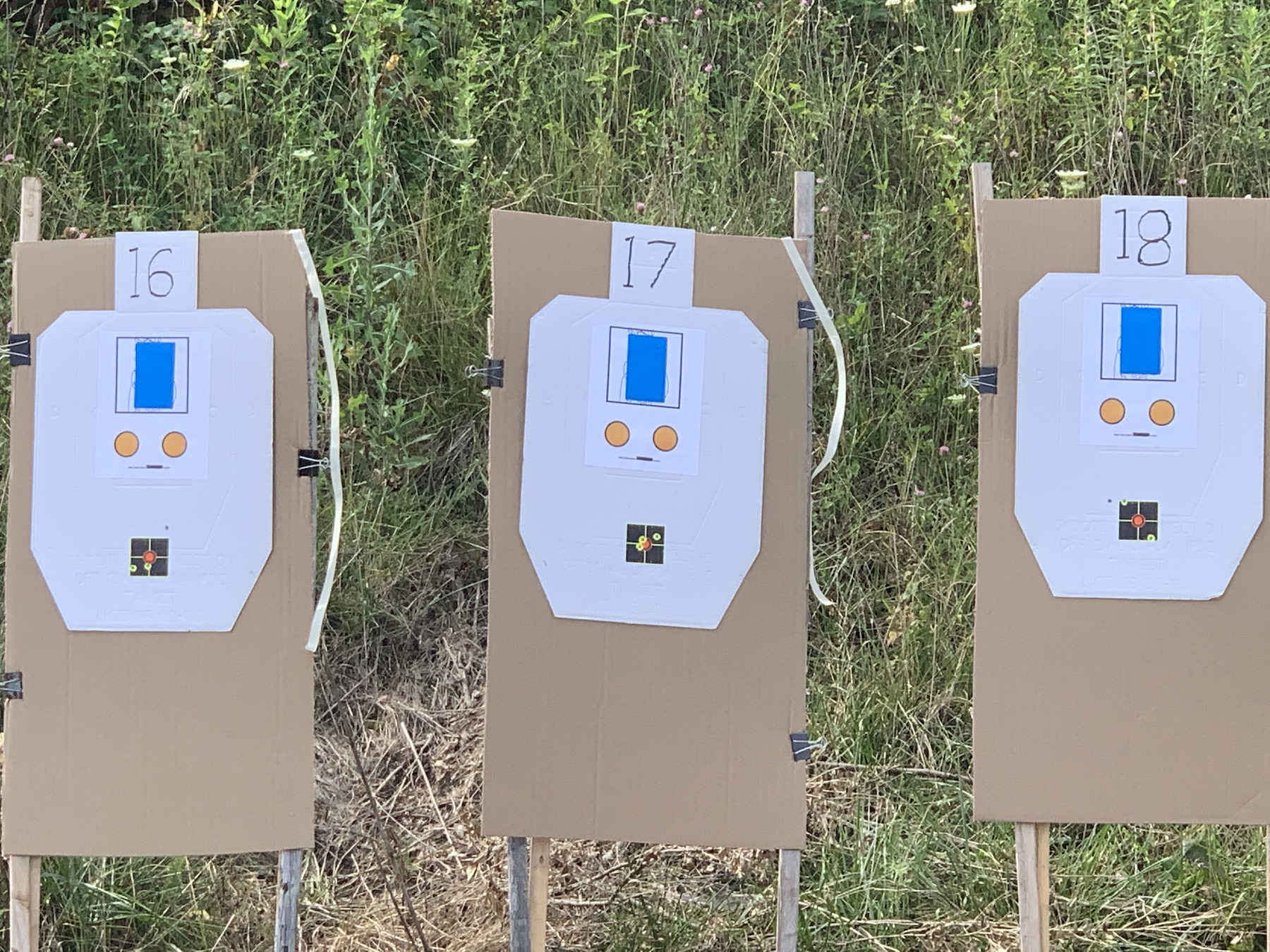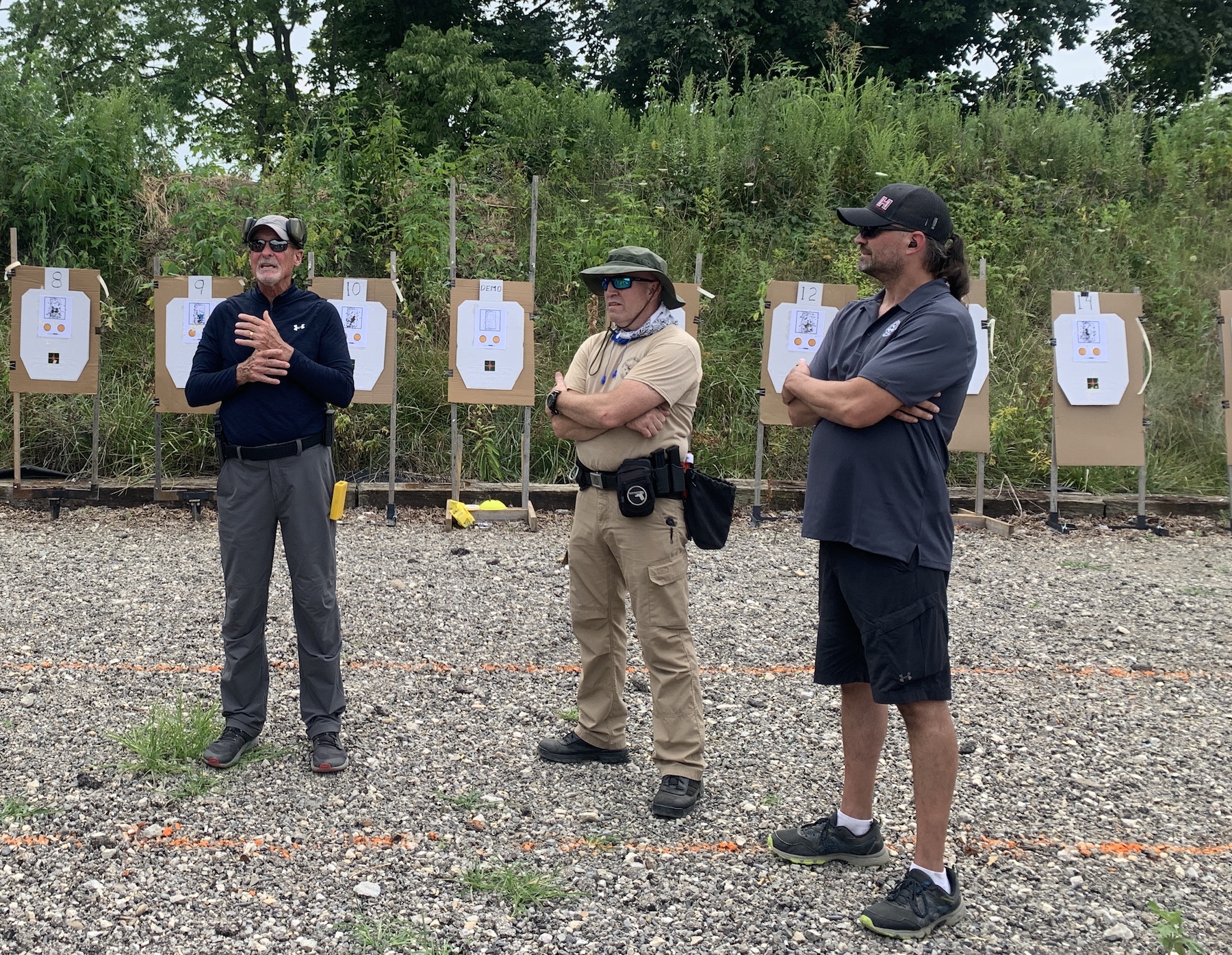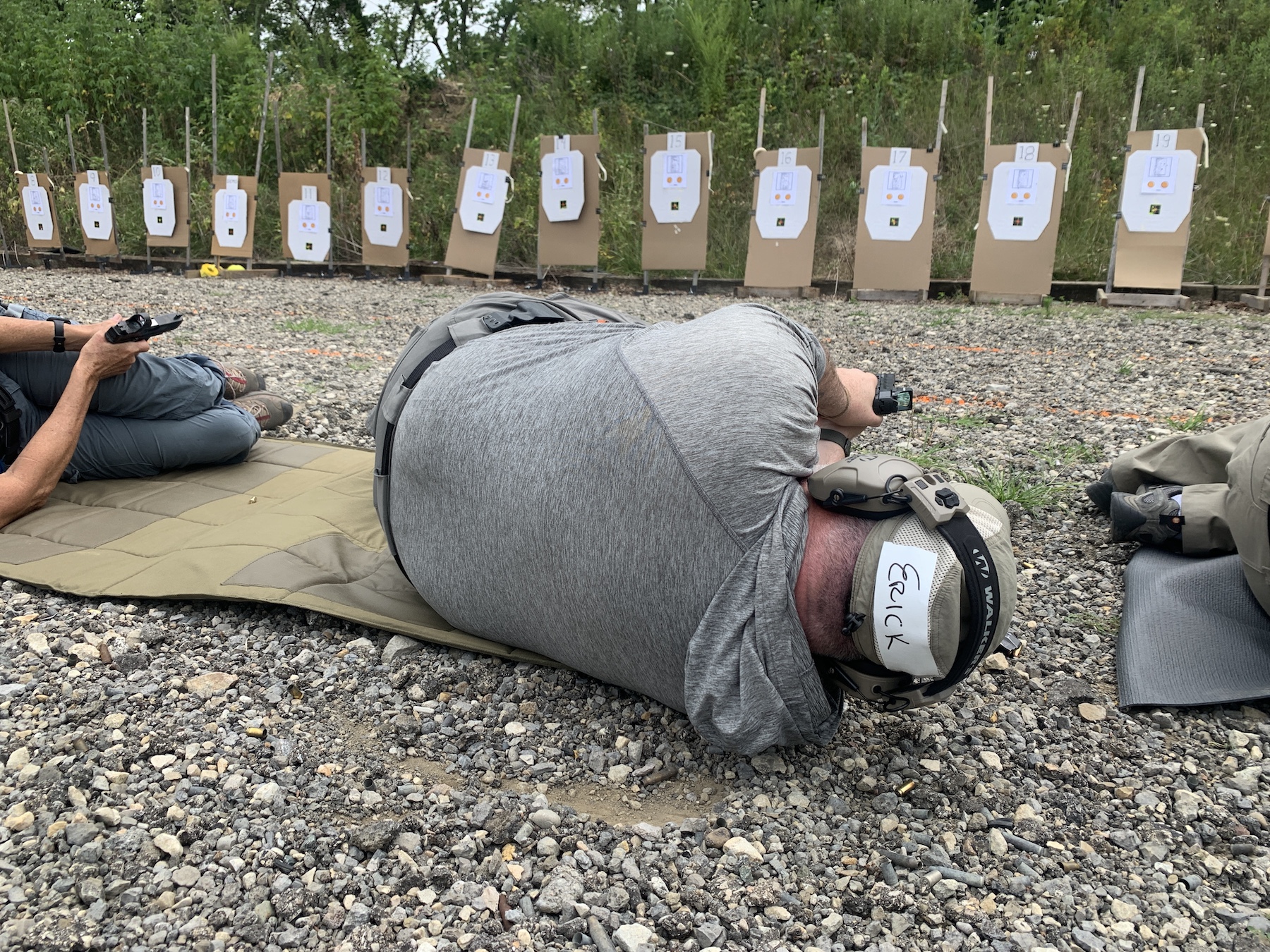
feature_8616
Over the weekend, I took a carry optics class from Dave Spaulding, formerly of Handgun Combatives. The “why” behind the course material is the genesis of this article.
When you are developing a class, what material do you include? Why does that material matter in the context of the course? How do you convey it? And, when in the course do you cover it?
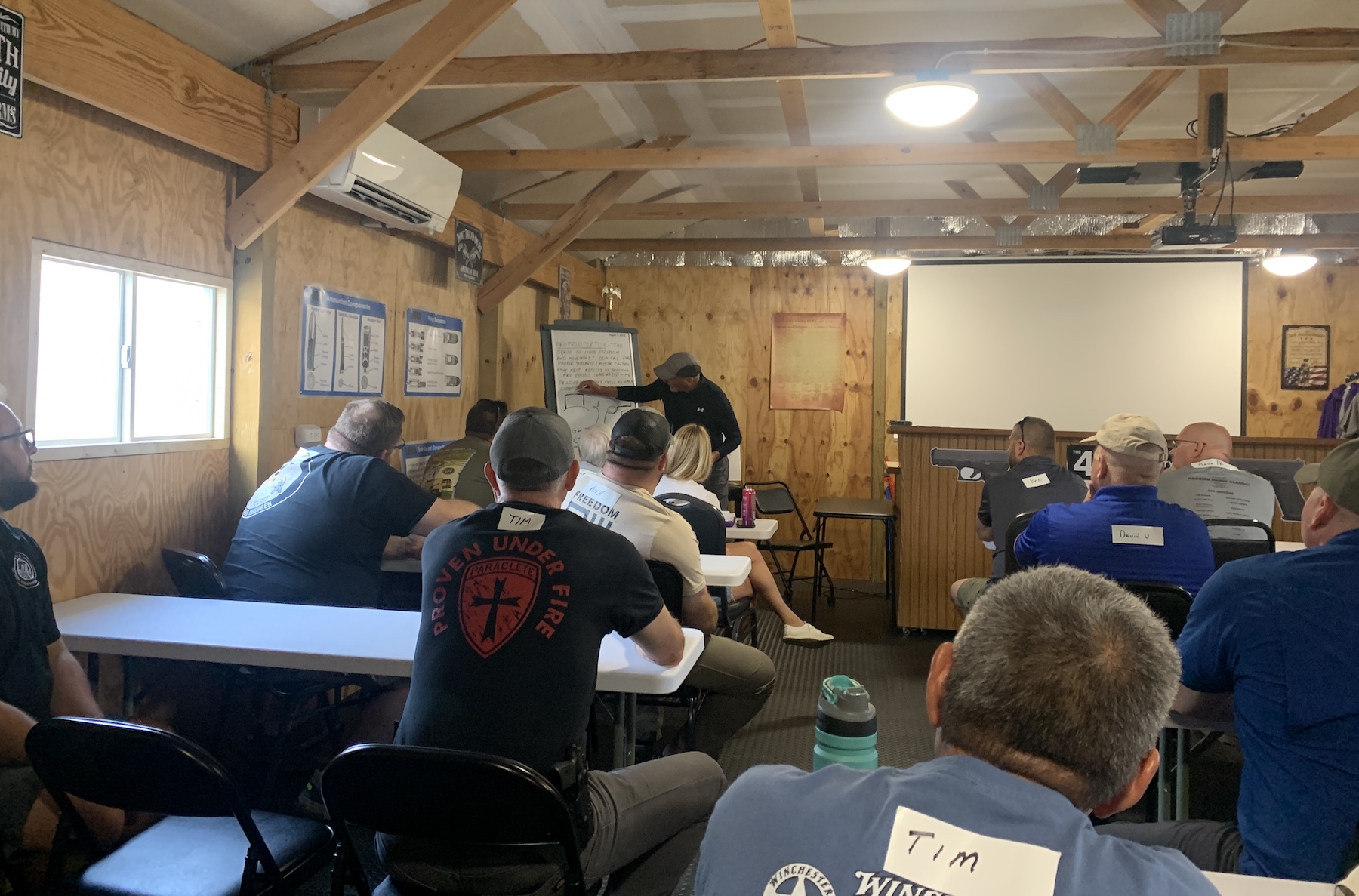
With a degree in Sports Physiology, Dave can demo it and discuss it – with the right words, used the right way.
Dave and Optics
He is not new to pistol-mounted optics and jumping onto a trend. Spaulding influenced my foray into pistol-mounted optics because of his writing on Kelly McCann’s efforts with them and his own experiences – back in ’09 and ’10.
As he explained a few times in class, he has identified two significant issues with pistol-mounted optics regarding training and use. Training-wise, he has taught his students that the most important thing you can do in any fight (beyond arm’s length) with a firearm is to get the sights into the eye-threat/target line as soon as possible. That certainly applies to optics.
How?
When Dave and Bucky looked at developing a pistol-mounted optics program, they bought several popular models to supplement what Dave already had. Then they made repeated trips to the range to shoot them. That was done in a variety of weather and lighting conditions. Knowing that fights can go to the ground, they shot from there. They shot them while moving and arriving at a new firing point. They even joke about shooting while hanging upside down to see if that would impact how you shot with an optic.
The Why’s and What’s
Here are some of What was covered in this class and Why it was in the curriculum. The student community would be well served if more instructors were this purposeful with the material.
Zeroing
Never mind that there were not a lot of arguments about zeroing iron sights for most shooters, except for windage adjustments. Zeroing one’s optic is a thing. This class addressed it right out of the chute. Our first rounds were onto a 2” square at ten yards. Why ten yards? That is a reasonable distance, given Dave’s study of defensive handgun usage.
This was followed by a walk-back drill, from 5 to 25 yards, on a 3”x5” target within a 6” square. The goal was to confirm your zero while giving you confidence in that zero and your sight picture.
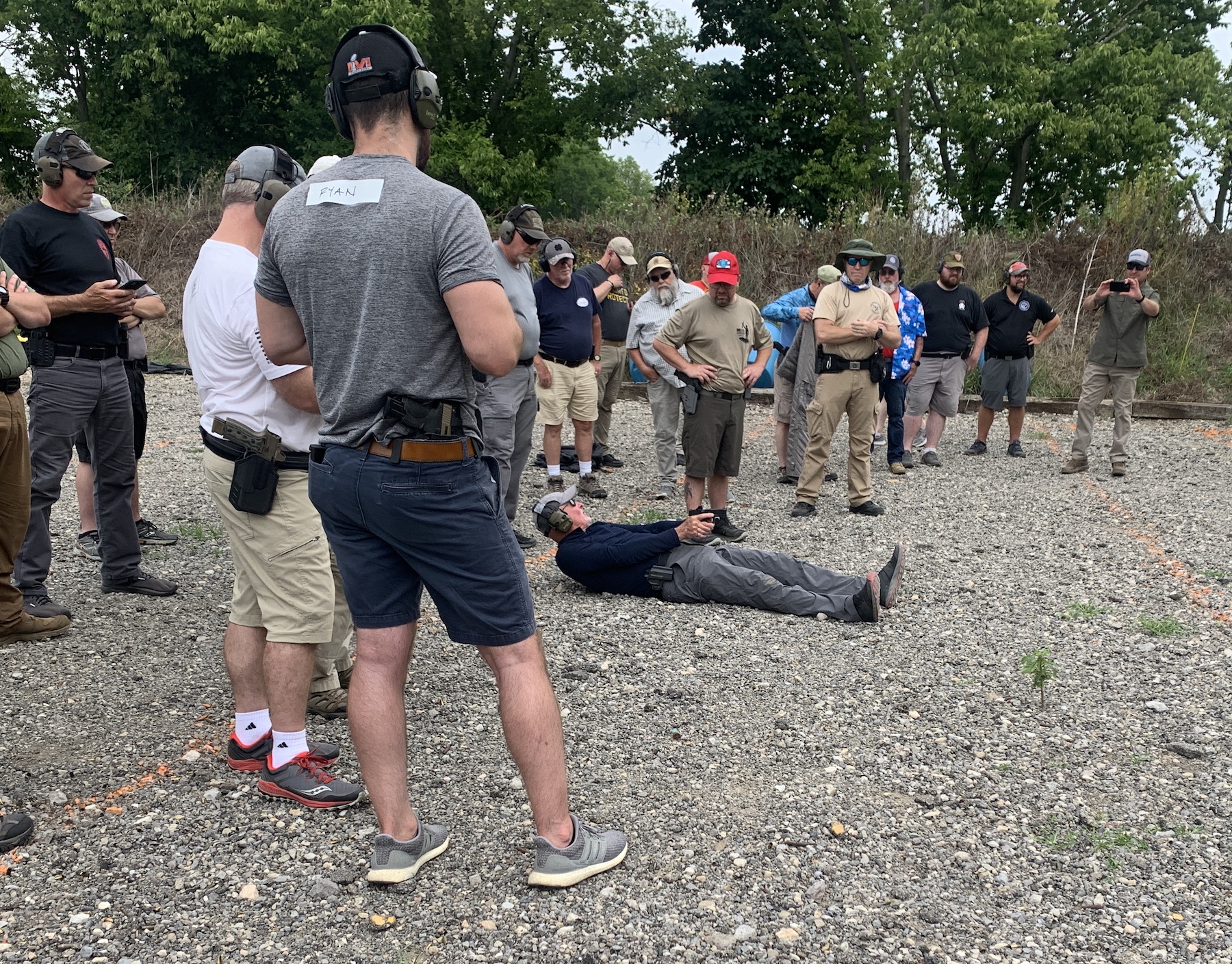
Dave demonstrates the supine position after explaining the likelihood of fights going to the ground.
Realistic Positions
During my red dot journey, I have taken a few classes. In both Dave & Bucky’s experiences and mine, one thing absent from those classes was positional shooting, including asymmetric positions – kneeling, rolling out from cover, seated, prone, on one’s sides, and supine. We spent time during the afternoon on our knees, butts, sides, and back. It’s one thing to acquire the dot rapidly if you’re always standing up; it’s another if you unexpectedly find yourself on your butt or your side. And those positions do come up off the square range.
Both Eyes
May people still close an eye when shooting. Regardless of why, having both eyes open is more efficient and a better way to gather information. There are several ways to emphasize this. Dave used a roll of printed crime scene tape stretched from the first target to the last. Then Bucky called out letters. You had to read the tape to find the letter, focus on it, let the dot appear, fire a shot, and hit that letter.
Accepting imperfection
With those new to using dots, there is a tendency to try getting it perfectly centered in the optic’s window. Unfortunately, that takes up time, time you may not have. And there’s the likelihood of trying to make the gun go bang when the dot is perfectly centered and getting a convulsive miss well outside the scoring area.
Dave’s other concern – regarding operational employment – is discussed in class but cannot be overcome by training. That is the sudden, unexpected loss of zero during a fight. When I’ve had optics suddenly lose zero, it has been during classes, and we were able to figure it out within a string or two. There is not an on-the-fly fix for this.

Dave explaining his method for recoil control when shooting strong-hand only. the POLICE Line tape was used to reinforce shooting with both eyes open.
This is the fourth class I have taken from Dave and the second one with his primary assistant instructor, Brian Buchanan – aka Bucky. Dave was a full-career cop and trainer from Ohio. He wrote a book on Handgun Combatives (check out Amazon), a metric buttload of articles in various publications, made several training videos, and has an in-depth YouTube channel.
I have continued to take classes from Dave because of the effort he puts into developing material that was and is relevant to my situation – working cop and now a retired guy.
Dave decided to head towards retirement and closed Handgun Combatives a couple of years ago. This final optics class was at the request of several long-time students. I was very fortunate to have been invited based on my work in the same arena.
Gear
And since it’s a rule that you can’t cover a class without talking about your gear … I used a Smith & Wesson M&P 2.0 Compact 9mm with a Holosun 507Comp optic, out of a Handgun Combatives holster, spare magazines were in an old kydex pouch from Raven Concealment, my belt was a Frequent Flyer from The Wilderness, hearing protection was a pair of Walker’s XCEL electronic muffs, and my eye protection is from Magpul with prescription lenses. I shot the class using 124 grain 9mm ball from Remington’s Range line.

You need ammunition to train and confirm your dry practice. I used Remington’s Range line over the weekend.
A note about the optics they used in developing this class – every one of them broke. Both Dave and Bucky told me every one of the replacements was better than the one that came before it.
Several instructors in the community seriously consider the What and Why regarding their material. Dave’s class is just one example. As a student, think about what is driving the class material.
RESOURCES:

